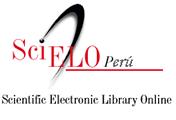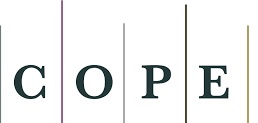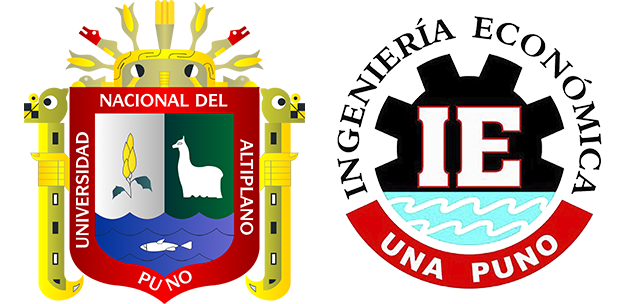The conflict of interest that is so grave that we all prefer to ignore it?
DOI:
https://doi.org/10.26867/se.2023.v12i2.153Palabras clave:
Conflicto, Interés, Burocracia, COVID-19, respuestas, emergencia, Gobierno, sesgoResumen
La declaración de conflicto de intereses es la forma predeterminada de mitigar el riesgo de daño de la promoción inconsciente o deliberada del interés propio que causa información errónea o toma de decisiones incorrectas, pero la atención a la divulgación de intereses causados por fuentes privadas de financiación de la investigación se convierte en un procedimiento rutinario ahora. Los conflicto de intereses muy fuertes causados por la financiación gubernamental de la investigación cubierta por los contribuyentes generalmente se subestiman gravemente. Los investigadores generalmente no tienen idea de que tomar fondos públicos y promover el asesoramiento de políticas para proporcionar más fondos debe declararse como un conflicto de intereses: se anticipa que la promoción de más fondos y poder bajo el control de organismos o entidades burocráticas traerá más fondos para los propios investigadores. La respuesta al COVID-19 de la mayoría de los gobiernos democráticos, basada en el uso de poderes de emergencia, cuenta con un amplio apoyo de la investigación financiada con fondos públicos, aunque la efectividad de tal respuesta no está respaldada por la historia de pandemias anteriores. El requisito explícito de revelar el financiamiento público como un posible Conflicto de Interés, al menos en caso de que los autores promuevan más poder y más fondos para el Gobierno, mitigará los riesgos de uno de los sesgos potencialmente peligrosos tanto en la investigación como en la toma de decisiones.
Métricas
Referencias
Aimone F. (2010). The 1918 Influenza Epidemic in New York City: A Review of the Public Health Response. Public Health Reports Supplement 3: The 1918-1919 Influenza Pandemic in the United States. 125(3): 71-79.
Alfano V., Ercolano S. (2020). The Efficacy of Lockdown Against COVID-19: A Cross-Country Panel Analysis. Applied Health Economics and Health Policy. 2020;18(4): 509-517. https://doi.org/10.1007/s40258-020-00596-3.
Alwan N.A, et al. (2020). Scientific consensus on the COVID-19 pandemic: we need to act now. Lancet. 2020;396(10260):e71-e72. https://doi.org/10.1016/S0140-6736(20)32153-X .
Anderson M (1986) The Unfinished Agenda: Essays on the Political Economy of Government Policy in Honour of Arthur Seldon. London: Institute of Economic Affairs
Armentano D. (1996). Antitrust Policy: The Case for Repeal. Washington, D.C.: Cato Institute.
Azoulay, P., Zivin JSG., Manso G. (2009). Incentives and creativity: evidence from the academic life sciences. National Bureau of Economic Research (NBER) Working Paper No. 15466. NBER, Cambridge, Massachusetts, USA. https://doi.org/10.3386/w15466 .
Bagus P, Peña-Ramos J, Sánchez-Bayón A (2022) Capitalism, COVID-19 and lockdowns. BEER, 31(SI), 1–11. https://doi.org/10.1111/beer.12431
Bagus P, Peña-Ramos, J, Sánchez-Bayón, A (2021) COVID-19 and the Political Economy of Mass Hysteria. Int. J. Environ. Res. Public Health, 18, 1376. https://doi.org/10.3390/ijerph18041376
Bero L.A. (2013). Tobacco industry manipulation of research in European Environment Agency. In: European Environmental Agency. Late lessons from early warnings: science, precaution, innovation. Copenhagen: EEA. Ch 7, pp. 151-178.
Bjørnskov C. (2021). Did Lockdown Work? An Economist’s Cross-Country Comparison. CESifo Economic Studies. ifab003, https://doi.org/10.1093/cesifo/ifab003.
Boice J.D. Jr. (2017). The linear nonthreshold (LNT) model as used in radiation protection: an NCRP update. International Journal of Radiation Biology. 2017;93(10):1079-1092. https://doi.org/10.1080/09553002.2017.1328750
Bollen, J., Carpenter S. R., Lubchenco J., Scheffer M. (2019). Rethinking resource allocation in science. Ecology and Society. 24 (3):29. https://doi.org/10.5751/ES-11005-240329.
Brandt A.M. (2012). Inventing Conflicts of Interest: A History of Tobacco Industry Tactics. American Journal of Public Health. Jan; 102(1):63-71.
Brauner J.M, Mindermann S, Sharma M, Johnston D, Salvatier J, Gavenčiak T, Stephenson AB, Leech G, Altman G, Mikulik V, Norman AJ, Monrad JT, Besiroglu T, Ge H, Hartwick MA, Teh YW, Chindelevitch L, Gal Y, Kulveit J. (2021). Inferring the effectiveness of government interventions against COVID-19. Science. 371(6531): eabd9338. https://doi.org/10.1126/science.abd9338.
Buchanan J, Tullock G (1962) The Calculus of Consent: Logical Foundations of Constitutional Democracy. Ann Arbor: The University of Michigan Press
Burris Val. (2001). The Two Faces of Capitalism: Corporations and Individual Capitalists as Political Actors. American Sociological Review. 2001;66(3):361-381.
Butos, W.N., McQuade T.J. (2015). Causes and Consequences of the Climate Science Boom. The Independent Review, 2015, 20(2): 165-196.
Butos, W.N., McQuade T.J. (2006). Government and Science: A Dangerous Liasion? Independent Review, 11(2):177-208.
Calabrese E.J. (2019). The linear No-Threshold (LNT) dose response model: A comprehensive assessment of its historical and scientific foundations. Chemico-Biological Interactions. 301: 6-25.
Cauchemez S, Kiem CT, Paireau J., Rolland P., Fontanet A. (2020). Lockdown impact on COVID-19 epidemics in regions across metropolitan France. Lancet (correspondence). 396(10257):1068-1069. https://doi.org/10.1016/S0140-6736(20)32034-1.
Coyne Christopher J.(ed.) Boettke Peter (ed.) (2015). The Oxford Handbook of Austrian Economics. Oxford University Press.
Derwand, R., Scholz, M., Zelenko, V. (2020). COVID-19 outpatients – early risk-stratified treatment with zinc plus low dose hydroxychloroquine and azithromycin: a retrospective case series study. International Journal of Antimicrobial Agents. 56(6):1-10. https://doi.org/10.1016/j.ijantimicag.2020.106214.
Di Domenico L, Pullano G, Sabbatini CE, Boëlle PY, Colizza V. (2020). Impact of lockdown on COVID-19 epidemic in Île-de-France and possible exit strategies. BMC Medicine. 2020;18(1):240. https://doi.org/10.1186/s12916-020-01698-4.
Downs A. (1957). An Economic Theory of Democracy. NY, Harper and Row.
Fang, FC., Bowen A., Casadevall A. (2016). NIH peer review percentile scores are poorly predictive of grant productivity. eLife, 2016; 5:e13323. https://doi.org/10.7554/eLife.13323.
Feinendegen LE, Pollycove M, Neumann RD. (2013). Hormesis by low dose radiation effects: low-dose cancer risk modeling must recognize up-regulation of protection. In: Baum RP (ed.) Therapeutic Nuclear Medicine, Springer, Berlin. pp 789-805.
Flaxman, S., Mishra, S., Gandy, A. et al. (2020). Estimating the effects of non-pharmaceutical interventions on COVID-19 in Europe. Nature; 584:257–261. https://doi.org/10.1038/s41586-020-2405-7.
GAO (1966, Feb. 01). The Budget and Accounting Act. https://www.gao.gov/products/d03855. Accessed September, 1, 2022.
Ginther DK, Schaffer WT, Schnell J, et al. (2011). Race, ethnicity, and NIH research awards. Science; 333(6045): 1015-1019. https://doi.org/10.1126/science.1196783.
Giubilini A. (2020). An Argument for Compulsory Vaccination: The Taxation Analogy. Journal of Applied Philosophy. ;37(3):446-466. https://doi.org/10.1111/japp.12400.
Golan Z. (2009). Assessment of the need for the Office of the Chief Scientist and the Capital Investment Encouragement Law. Jerusalem Institute for Market Studies position paper.
Gordon, R., and B. J. Poulin. (2009). Cost of the NSERC science grant peer review system exceeds the cost of giving every qualified researcher a baseline grant. Accountability in Research: Policies and Quality Assurance;16:13-40. https://doi.org/10.1080/08989620802689821.
Hale T., Angrist N., Goldszmidt R. et al. (2021). A global panel database of pandemic policies (Oxford COVID-19 Government Response Tracker). Nature. Human Behavior ;5:529-538.
Herbert, DL., Barnett AG., Graves N. (2013). Australia’s grant system wastes time. Nature. 2013; 495:314. https://doi.org/10.1038/495314d
Huerta de Soto J, Sánchez-Bayón A, Bagus P (2021) Principles of Monetary & Financial Sustainability and Wellbeing in a Post-COVID-19 World. Sustainability, 13(9): 4655 (1-11). https://doi.org/10.3390/su13094655
Ioannidis J.P.A. Why Most Published Research Findings Are False. PLOS Medicine, 2005;2(8):e124. https://doi.org/10.1371/journal.pmed.0020124.
Jasay A. (1985). The State. Indianapolis: Liberty Fund, 1998 (1st published in 1985).
Kater Michael H. (1983). The Nazi Party: A Social Profile of Members and Leaders, 1919–1945. Cambridge: Harvard University Press.
Kealey T. (1996). The Economic Laws of Scientific Research. Palgrave Macmillan.
Krishan K, Kanchan T. (2020). Lockdown is an effective 'vaccine' against COVID-19: A message from India. The Journal of Infections in Developing Countries. 2020;14(6): 545-546. https://doi.org/10.3855/jidc.12931.
Lawler, Emily C. (2017). Effectiveness of vaccination recommendations versus mandates: Evidence from the hepatitis A vaccine. Journal of Health Economics, Vol. 52, pp. 45–62. https://doi.org/10.1016/j.jhealeco.2017.01.002
Machan Tibor R. (2000). Bias in Government Science https://mises.org/library/bias-government-science/. Accessed September, 1, 2022.
Matanoski G, Kanchanaraksa S, Lantry D, Chang Y. (1995). Characteristics of nonsmoking women in NHANES I and NHANES I epidemiologic follow-up study with exposure to spouses who smoke. American Journal of Epidemiology. 1995;142(2):149-57. https://doi.org/10.1093/oxfordjournals.aje.a117613.
McQuade T.J., Butos W.N. (2012). Nonneutralities in Science Funding: Direction, Destabilization, and Distortion. De Gruyter. Journal des Economistes Et des Etudes Humaines, 2012;18(1). https://doi.org/10.1515/1145-6396.1262;
Mehra M.R, Desai S.S, Frank R., Amit N.P. (2020). Hydroxychloroquine or chloroquine with or without a macrolide for treatment of COVID-19: a multinational registry analysis. https://doi.org/10.1016/S0140-6736(20)31180-6 (The paper has been retracted).
Mises, Ludwig von. 1957. Theory and History. An Interpretation of Social and Economic Evolution. Auburn, Alabama: von Mises Institute 1985 (1st published Yale University Press).
Moghissi AA, Calderone RA, Estupigan C, Koch R, Manfredi K, Vanderdys V. (2018). Requirements for Transparency and Communicability of Regulatory Science. Dose Response;16(4):1559325818813056. doi: 10.1177/1559325818813056.
National Research Council of the National Academies. (2006). Health Risks from Exposure to Low Levels of Ionizing Radiation: BEIR VII Phase 2. Washington, DC: The National Academies Press.
Niskanen W. (1971). Bureaucracy and Representative Government. Aldine-Altherton, Chicago.
Peres J. (2013). No Clear Link Between Passive Smoking and Lung Cancer. JNCI: Journal of the National Cancer Institute, 2013;105(24):1844–1846, https://doi.org/10.1093/jnci/djt365.
Pisinger C, Godtfredsen N, Bender AM. (2019). A conflict of interest is strongly associated with tobacco industry-favourable results, indicating no harm of e-cigarettes. Preventive Medecine.;119:124-131. https://doi.org/10.1016/j.ypmed.2018.12.011.
Rabovsky Thomas M., Ellis William Curtis. (2014). Higher Education and Congressional Influence on Administrative Decisions. Social Science Quarterly, 95(3) (September 2014), pp. 740-759.
Robbins L. (1998). A History of Economic Thought. The LSE Lectures. Princeton University Press.
Rothbard Murray N. (2002). A History of Money and Banking in the United States: The Colonial Era to World War II. The Ludwig von Mises Institute. Auburn, Alabama.
Saint-Victor Diane S., Omer Saad B. (2013). Vaccine refusal and the endgame: walking the last mile first. Philosophical Transactions: Biological Sciences, Vol. 368, No. 1623. https://doi.org/10.1098/rstb.2012.0148
Sánchez-Bayón, A. (2019a). Sociología de la identidad estadounidense: qué les ha unido y les divide hoy. Porto: Ed. Sindéresis
Sánchez-Bayón, A. (2019b). Cultura democrática a juicio en la posglobalización: claves sociológicas y ontológicas de i-ciudadanía y e-democracia. Cuadernos Manuel Giménez Abad, 17: 130-148
Sánchez-Bayón, A. (2020). Medidas de economía de bienestar que destruyen empleo en la economía digital. Semestre Económico, 23(55), 87-112. DOI: https://doi.org/10.22395/seec.v23n55a4
Sánchez-Bayón, A. (2022a). Crítica del positivismo formalista en Economía y las alternativas heterodoxas para la economía digital. Encuentros Multidisciplinares, 71: 1-16
Sánchez-Bayón, A. (2022b). De la Síntesis Neoclásica a la Síntesis Heterodoxa en la Economía Digital. Procesos de Mercado, 19(2): 277-306. https://doi.org/10.52195/pm.v19i2.818
Sánchez-Bayón, A. (2022c). Lectura heterodoxa de la transformación digital europea del turismo: paradojas y fallos por el cambio de modelo. Atlantic Review of Economics-AROEC, 5(2), 1-18
Sánchez-Bayón, A. (2023). Análisis heterodoxo del sector turístico español pos-COVID: fallos en reajuste digital del empleo y vulnerabilidad empresarial, Estudios económicos, 40(81): 223-252, https://doi.org/10.52292/j.estu-decon.2023.3438
Sánchez-Bayón, A., Fuente, C., Campos, G. (2018). Crisis identitaria estadounidense ante su paradoja posmoderna: quiebra de American civil religion y riesgo transoccidental, Cauriensia. Revista Anual de Ciencias Eclesiásticas-Ftad. Teología de Cáceres, 13: 619-636. DOI: https://doi.org/10.17398/2340-4256.13.619
Sanders E. (2004). Economic Regulation in the Progressive era. in American Congress. Building of Democracy, edited by Zelizer Julian E. Boston – New York: Houghton Mifflin Company.
Savage James D. (1999). Funding Science in America: Congress, Universities, and the Politics of the Academic Pork Barrel. 1st Edition Cambridge University Press.
Siegel JA, Greenspan BS, Maurer AH, Taylor AT, Phillips WT, Van Nostrand D, Sacks B, Silberstein EB. The BEIR VII Estimates of Low-Dose Radiation Health Risks Are Based on Faulty Assumptions and Data Analyses: A Call for Reassessment. Journal of Nuclear Medecine 2018;59(7):1017-1019. https://doi.org/10.2967/jnumed.117.206219.
Smith A. (1776). An Inquiry into the Nature and Causes of the Wealth of Nations. London: Methuen, 1904. 2 vols. Book 4. Ch. VII «Of colonies».
Socol Y, Shaki Y.Y. and Yanovskiy M. (2019). Interests, Bias, and Consensus in Science and Regulation. Dose Response. 2019;17(2):1559325819853669. https://doi.org/10.1177/1559325819853669.
Soto H. (1989). The other Path. Economic answer to terrorism. Basic Boks New York. (1st published: as “The other path. The invisible revolution in the Third World.” New York: Harper & Row Publishers, Inc. 1989).
Stevens J.B. (2018). The Economics of Collective Choice. NY: Routledge.
Vaiserman A., Koliada A., Zabuga O, Socol Y. (2018). Health Impacts of Low-Dose Ionizing Radiation: Current Scientific Debates and Regulatory Issues. Dose-Response;16/3: 1559325818796331. https://doi.org/10.1177/1559325818796331.
Yanovskiy M. and Socol Y. (2021). COVID-19 Library. Filling the Gaps (February 14, 2021). Available at SSRN: http://dx.doi.org/10.2139/ssrn.3784709.
Yanovskiy M. (2022). The Forgotten Conflict of Interest in Modern Science. Reference Materials. https://papers.ssrn.com/abstract=4190042.
Descargas
Publicado
Número
Sección
Licencia
Derechos de autor 2023 Moshe Yanovskiy, Yehoshua Socol

Esta obra está bajo una licencia internacional Creative Commons Atribución 4.0.















